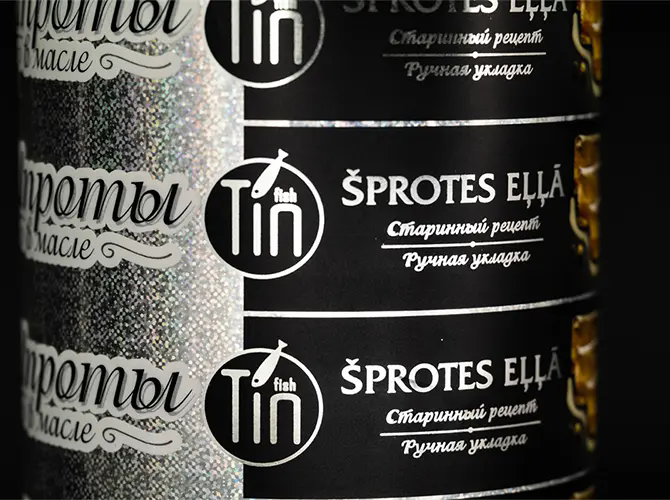How Does Cold Foil Elevate Packaging Design?
2025-08-21
In today’s competitive marketplace, brands are under constant pressure to differentiate themselves and attract consumer attention. One of the most effective ways to achieve this is by upgrading packaging aesthetics with Cold Foil . Cold foil printing has become a game-changer in the packaging industry, providing high-quality metallic effects that enhance brand perception, increase shelf appeal, and drive sales.
What Is Cold Foil and How It Works
Cold foil is a printing technique that applies metallic foil to a substrate using a cold transfer process. Unlike hot stamping, which relies on heat and dies, cold foil uses a combination of adhesive, printing plates, and pressure to transfer metallic effects onto packaging materials.
Here’s a simplified breakdown of the cold foil process:
-
Adhesive Application – A UV-curable adhesive is printed onto the substrate in the desired foil pattern.
-
Foil Transfer – A thin layer of metallic foil is placed over the adhesive and pressed against the substrate.
-
Curing – UV light cures the adhesive, securing the foil in place.
-
Foil Release – The unused foil is removed, leaving behind a clean, precise metallic image.
This process allows intricate designs and high-resolution details, making it ideal for modern packaging that demands visual impact.
Key Advantages of Cold Foil Technology
| Feature | Cold Foil | Hot Stamping |
|---|---|---|
| Production Speed | Faster and more efficient | Slower due to heating requirements |
| Design Flexibility | Handles gradients and fine details | Limited to solid, flat designs |
| Color Overprinting | Enables full CMYK printing on foil | Not possible |
| Cost Efficiency | Lower tooling costs | Higher due to custom dies |
| Sustainability | Uses thinner foil layers and recyclable materials | Often less eco-friendly |
By combining speed, cost efficiency, and visual versatility, cold foil has become the go-to solution for industries where premium branding is critical, including cosmetics, food & beverage, pharmaceuticals, and luxury goods.
Why Choose Cold Foil for Premium Packaging
Consumers are naturally drawn to packaging that stands out. Cold foil enables brands to achieve this by adding metallic brilliance without sacrificing design flexibility or environmental responsibility.
1. Enhancing Shelf Appeal
Studies show that consumers form an opinion about a product within the first 7 seconds of interaction. Cold foil allows brands to leverage eye-catching metallic effects that instantly elevate perceived value and make packaging pop on shelves.
2. Sustainability and Eco-Friendliness
Unlike hot foil, which often uses thicker foils and requires heat, cold foil technology is energy-efficient and uses minimal metallic layers, making it compatible with recyclable packaging materials.
3. Cost and Time Efficiency
Cold foil eliminates the need for custom dies and heating equipment, reducing both initial setup costs and production lead times. This makes it a perfect solution for brands managing seasonal packaging or limited edition releases.
Cold Foil Product Parameters
Below are the recommended specifications for achieving the best results in cold foil printing:
| Parameter | Specification |
|---|---|
| Foil Thickness | 0.02mm – 0.03mm |
| Transfer Speed | Up to 12,000 sheets/hour |
| Substrate Compatibility | Paperboard, coated papers, PET, PVC |
| Adhesive Type | UV-curable adhesive |
| Available Colors | Silver, gold, holographic, custom shades |
| Overprint Compatibility | Full CMYK + Pantone |
| Durability | Scratch-resistant, long-lasting shine |
These parameters ensure that brands get high-definition foil results that are durable, vibrant, and ready for diverse market needs.
Applications and Industry Use Cases
Cold foil technology is versatile and used across multiple industries to deliver luxurious finishes and enhanced brand presence.
1. Cosmetics and Personal Care
Metallic effects create a premium image for cosmetic products, from lipstick boxes to perfume cartons. With cold foil, intricate floral patterns or holographic highlights are easy to achieve.
2. Food and Beverage
Brands rely on cold foil to differentiate packaging for chocolates, wines, and craft beers. The brilliant metallic sheen communicates quality and encourages impulse purchases.
3. Pharmaceuticals
Cold foil helps pharmaceutical brands highlight critical details such as dosage information, authenticity seals, and brand logos without compromising regulatory requirements.
4. Luxury Goods
From jewelry boxes to gift packaging, cold foil ensures exceptional detailing and high-end visual effects, making it indispensable for luxury products.
Cold Foil FAQs
Q1. Is cold foil suitable for eco-friendly packaging?
A1. Yes. Cold foil uses ultra-thin metallic layers and UV adhesives, making it compatible with recyclable substrates. Unlike hot foil, it consumes less energy and reduces environmental impact.
Q2. Can cold foil be overprinted with colors?
A2. Absolutely. Cold foil technology allows full CMYK and Pantone color overprinting, enabling designers to create vibrant metallic gradients, textures, and holographic effects without compromising detail.
Why Partner With Deluxe for Cold Foil Solutions
Choosing the right partner for cold foil printing is critical to achieving consistent quality, sustainable practices, and cost-efficient results. Deluxe specializes in advanced cold foil solutions, offering a wide range of customizable metallic finishes that help brands stand out in crowded markets.
At Deluxe, we combine cutting-edge technology, eco-friendly materials, and expert craftsmanship to deliver packaging that not only attracts consumers but also aligns with modern sustainability standards. Whether you need holographic effects for limited editions or luxury metallic finishes for premium product lines, Deluxe provides tailored solutions that fit your needs.
If you’re ready to elevate your packaging and give your products the attention they deserve, contact us today to discuss your project.



